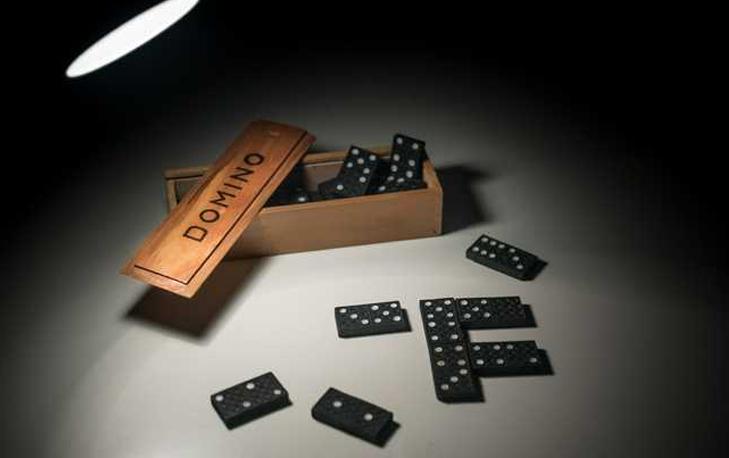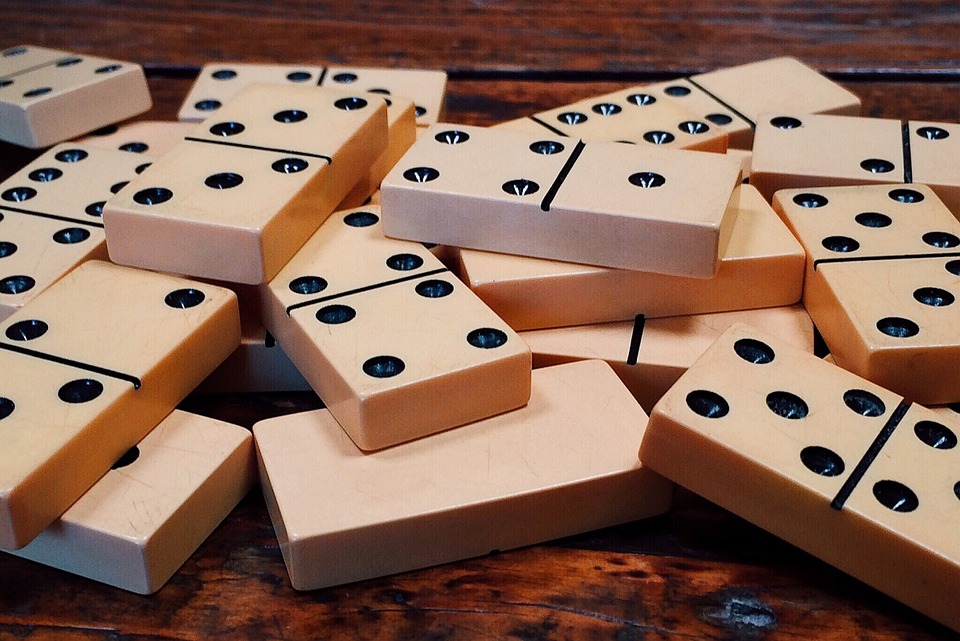There are many types of domino sets available and there are many games you can play with them. These are the rules for two of the most popular West-based games: the “standard” or “Block” game and the “Draw”. These instructions are for the standard or double-six domino set of 28 tiles. However, both can be played with a dual-nine or double-twelve set. These are the most popular games in British pubs. They are played with four players, often as two sets of partners.
We also provide the rules for All Fives, and their variations, which is a Dominoes-style game that is extremely popular in the USA.
The Block Game
The Start
The ritual of shuffle the dominoes face down with the flat side down produces a familiar sound over the centuries. Each player draws six dominoes, and then places them in a way that makes it difficult for the other players to see their value. This is the traditional English pub way to do this. Place the dominoes face down in two rows with three, so that each can be picked up using both hands. The other hand can then be used for drinking a pint. For beginners, you can place them on the edge of their row. Resting dominoes can be placed in a row facing them.
The person who holds the double-six or, failing that, the double-five is the first to play. The tile to be played must be the same tile that allowed the player to take their first turn. If no one of the players holds a double tile, the tiles will be reshuffled or redrawn.
The Play
Each player must then place a tile on the table, positioning it so that it touches the end of the domino chains. The length of the chain gradually increases. One player can only play tiles that have a number on them at either end of the domino chains. A domino is a tile that has the same number on both ends. This is a normal outcome and is usually useful for the player but distasteful for the opponents.
Only a part of the fun is in the placement of the tiles. Place each tile so that the matching ends are in close proximity. The tile may be placed in squares in all directions, except if it is a double. Doubles should always be placed cross-wise across the chain. Also, a tile that is played to a double must be placed in the same way – perpendicular with the double touching its middle. According to the limitations of the playing surface and the wishes of the players, the domino chain will develop a snake-line shape at random.
A domino is only played if a player can lay it. Otherwise, the opponent will “knock” or rape the table to give the next player passes. Of course, the opposing players will take note of the numbers on the table and attempt to make them available in the future .
The End
Play stops normally when one player “chips in” (plays his last domino), but some versions require that both players chip out. If play reaches an impasse, the winner is the player with the lowest combined total of dominoes remaining.
Some pubs will play one point per game for scoring. Another way to score is with a cribbage board. The winners would score the sum of the spots on all the tiles left by the losers. The winners will receive the difference between the total spots of the winners and the total spots of the losers in a game that doesn’t involve anyone chipping out. You can play a game up to 100 points or on a cribbageboard, up to 121 points.
Variations
You can play the game with either two or three players (start off with 8 tiles), with three players (start off with 6 tiles), with five players (start out with 5 tiles), or with four players who are not part of a partnership.
You can play the same game with either a double-12ity set (91 tiles), or a double-19ity set (55 tiles) domino set. Four players would choose 12 tiles from a double-12ity set. Nine tiles would be picked from a double-9 set.
The Draw Game
The Draw Game, which is a variation of the Block game but much more popular in other parts of the globe, is essentially a version of the Block game. Although players start with fewer dominoes, a player who is unable to place a domino must choose a sleeping domino to complete their set. Players can pass their turn if they are unable to go when the sleeping dominoes run low. This variation would see two players start with seven dominoes. Three players would have 5 tiles and four players would have 4 tiles. Five players would have 3 tiles.
The main difference between the two games lies in the fact that the Draw Game allows players to know which tiles will be in play. This allows them to deduce which tiles might be in their possession. The Block game has a greater element of uncertainty because a few tiles are still asleep and unknow throughout the game.
Cross Dominoes
This variation is an extension of the Draw game and offers more options, but takes up less space at the table!
You play the game in the same manner as the Draw game, but you start with a completely different starting point. The first doublet must be played and the next four tiles must be played against the doublet to form a cross. For the first doublet, dominoes must be played on all four sides of a tile. While players may need to take sleeping tiles, once the cross is completed, play can continue as in the draw game. From that point, every turn now has four dominoes to play against instead of the previous two.
Double Nine Cross Dominoes
This variation can be used for Double Nine sets. Three or more players begin with seven tiles each. Four or more players will start with five tiles. Cross dominoes is the first game. The second through fifth tiles are used to form a cross around the original doublet. The Draw game continues, but a doublet can be laid so that two chains can be started. The number of chains available is much greater than in previous games.
Double Twelve sets allow for the creation of the same game with the same number tiles per player.
All Five
All Fives, also known as “Muggins”, and “The Five Game”, is a game that involves a double six-set of dominoes. It can be played by up to four people. Each player gets five dominoes regardless of how many players are present. The highest doublet wins and the game proceeds clockwise. You need to score at the beginning and end of each game. A cribbage board is a great scoring tool.
Play continues in the Block Game, with each player placing a tile to connect with the number of tiles it matches. Additionally, players must lay tiles in a way that the sum of numbers at each end of the chain adds up to 5, or a multiple thereof. This is because such play will add that amount to the player’s score. Doublets are laid in the same direction as in Block. The total number of spots on each doublet is the sum of all spots. For example, if there’s a 3 on one side of the chain and 6 on the other, the player could play the double 6, which would make it easy to add the ends up to 3 + 6 + 6. This would give a multiplier of five. A player could play the double blank if there are a double five at one side and a blank on the other. This would make the ends equal 10.
If a player lays down a tile such that its ends add up to five, and fails to declare it, they can shout “Muggins!” You can claim the score as soon as the next tile has been laid. If there are more than three sleeping tiles remaining in the middle, a player can take a sleeping tile and not play. A player who is unable to play after there are two remaining sleeping tiles passes for that turn.
The game ends when a player runs out of tiles or if none of the other players have any tiles left. The winner is either the player who has the most tiles or, in the case of no players, the total spots left on their dominoes. If no player manages to escape, the players add these numbers together and the winner becomes the player with the lowest total. Each loser subtracts their spot total (which is zero in the case of the winner) from their total spot, rounds it to the nearest multiple five and adds that amount to the winner’s score. If the winner has a spot sum of 3, while the losers have respective spot totals 11, 6 and 5, then the total to the winner will be calculated as follows:
- Loser 1 subtracts the winner’s total of 3 from 11, = 8, and rounds it to the nearest multiple, which is 10,
- Loser 2 substracts the winner’s total of 3 spots from 6 = 3, and rounds it to the nearest multiple 5 which is 5.
- Loser 3 subtracts the winner’s total of 3 spots from 5 = 2 then rounds it to the nearest multiple 5 which is 0.
The winner gets 15 more points.
The match is won by the first player to score 100.
All Fives and All Threes
The game can be played the same as All Fives, except that multiples three count for points. If a player places a tile so that its ends add up to 6, they score 6 points for the multiple. For a multiple five, a total 10 score 10 points and 15 score 15 points. The winner receives the points from any remaining tiles of the losers or their differences at the end of each game.
Masters Traditional Games is an Internet shop that sells quality traditional, pub, and other games. Our Rules Information page provides general information as well as copying and copyright.
These rules provide guidelines for friendly play. Always follow local rules and house rules if in doubt



